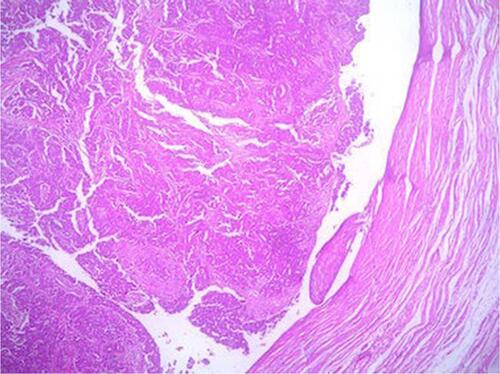Abstract
Background
The aim of this study was to evaluate the association of Chlamydia trachomatis (CT) infection with primary tubal and high-grade serous ovarian cancers.
Methods
This is a cross-sectional, retrospective study conducted at Ain Shams University Maternity Hospital, Egypt, from February 2008 to October 2017. Sixty-seven paraffin archival blocks specimens were retrieved from cases who underwent staging laparotomy due to high-grade serous ovarian cancer (30 cases), primary tubal serous cancer (25 cases), and control specimens of (12) tubal specimens from cases of benign gynecological conditions. All samples were examined for CT DNA using semiquantitative qRT-PCR.
Results
CT DNA was detected in 84% of high-grade tubal serous cancer, 16.7% of high-grade serous ovarian cancer, and 13.3% in controls (P<0.0005). Mean CT DNA relative quantity was significantly high (256) in tubal carcinoma, in comparison to that in high-grade serous ovarian cancer and controls (13.5 and 0.28, respectively; P<0.0005).
Conclusion
To the best of our knowledge, this is the first report on relation of CT to the tubal serous cancer, so the responsibility of CT tubal infection in the pathogenesis of primary tubal cancer needs to be considered.
Supplementary materials
Disclosure
The authors report no conflicts of interest in this work.


